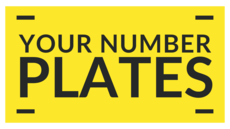Introduction: The Rise of Gel Number Plates
In recent years, gel number plates have surged in popularity among UK drivers seeking a sleeker, more modern vehicle aesthetic. As their popularity grows, so do questions surrounding their legality—especially as DVLA regulations continue to evolve in 2025.
What Are Gel Plates? Understanding the Basics
Gel plates, also known as 3D gel resin plates, are number plates with raised, glossy characters made using polyurethane gel. Unlike traditional flat plates, they offer a more premium appearance thanks to their texture and depth.
The Legal Framework for UK Number Plates
To remain road-legal, number plates in the UK must meet strict standards outlined by the DVLA. These include regulations concerning materials, font type, colour contrast, character spacing, and reflectivity. Plates must also be supplied by DVLA-registered number plate providers.
DVLA’s Stance on Gel Plates in 2025
As of 2025, gel plates are legal—provided they meet all DVLA specifications. The critical element is not the style or material, but rather compliance with BS AU 145e—the British Standard governing number plates.
Key Features That Make Gel Plates Compliant
To ensure legality, gel plates must:
- Be made from reflective material.
- Display solid black characters (not tinted or coloured).
- Maintain appropriate character spacing and alignment.
- Show the supplier’s name and postcode.
- Include the BS AU 145e code in the bottom corner.
If a gel plate checks all these boxes, it's road-legal in 2025.
Differences Between Gel, 3D, and 4D Plates
While gel plates fall under the "3D" category, it’s essential to distinguish them from 4D plates.
- 3D gel plates have raised, curved characters with a gel coating.
-
4D plates use laser-cut acrylic characters for a block-like look.
Despite stylistic differences, both types can be legal if compliant.
Recent Changes in DVLA Guidelines
The DVLA reinforced regulations in 2021 with the BS AU 145e standard. This continues into 2025, emphasizing visibility for ANPR (Automatic Number Plate Recognition) and safety. Non-reflective finishes, coloured characters, or unusual fonts are not permitted—regardless of whether a plate is gel, 3D, or otherwise.
MOT Implications: Will Gel Plates Pass?
A compliant gel plate should not cause any issues during an MOT test. However, if the plate has defects like peeling, poor reflectivity, or non-standard spacing, it could result in a failure. Many MOT testers now examine plates more closely due to increased scrutiny.
Design Rules: Font, Spacing, and Reflectivity
UK number plates must use the prescribed Charles Wright font. Character height, width, and spacing are standardized. Backgrounds must be yellow (rear) or white (front), with high reflectivity and no background patterns. Gel plates must adhere to these parameters despite their stylised look.
Risks of Non-Compliant Plates
Drivers using plates that deviate from legal standards risk fines up to £1,000, failed MOTs, and even the loss of personalised registrations. In worst-case scenarios, vehicles may be flagged for illegal modifications by ANPR systems.
Buying Gel Plates: What to Look For in 2025
Always purchase from a DVLA-registered supplier. Look for:
- Plates that specify BS AU 145e compliance.
- Correct documentation upon purchase (proof of identity and vehicle ownership).
- A warranty for durability and weather resistance.
Customisation vs. Compliance: Striking the Balance
Many drivers want individuality—but customisation must never override legality. Minor tweaks, like slightly different fonts or added logos, are tempting but dangerous. Stick within legal boundaries to avoid unnecessary penalties.
Penalties for Using Illegal Number Plates
Illegal plates can attract:
- A fixed penalty notice of up to £1,000.
- MOT test failure.
- Vehicle seizure in severe cases.
- Complications when selling or transferring a personalised plate.
The cost of non-compliance can outweigh any visual gains.
Future of Gel Plates: Innovation and Regulation
As automotive design becomes more personalised, DVLA regulations may evolve further. Manufacturers are also exploring more durable, eco-friendly materials for plates. However, legality will always hinge on visibility, readability, and compliance with national standards.
Final Thoughts: Making the Legal Choice
Gel plates remain a stylish yet legal option in 2025—if chosen wisely. With the right supplier and a focus on compliance, drivers can enjoy both aesthetic appeal and peace of mind. Always check for BS AU 145e markings and avoid unregulated customisations.
Staying on the right side of the law ensures your number plate won’t just look good—it’ll keep you safe from legal trouble.

